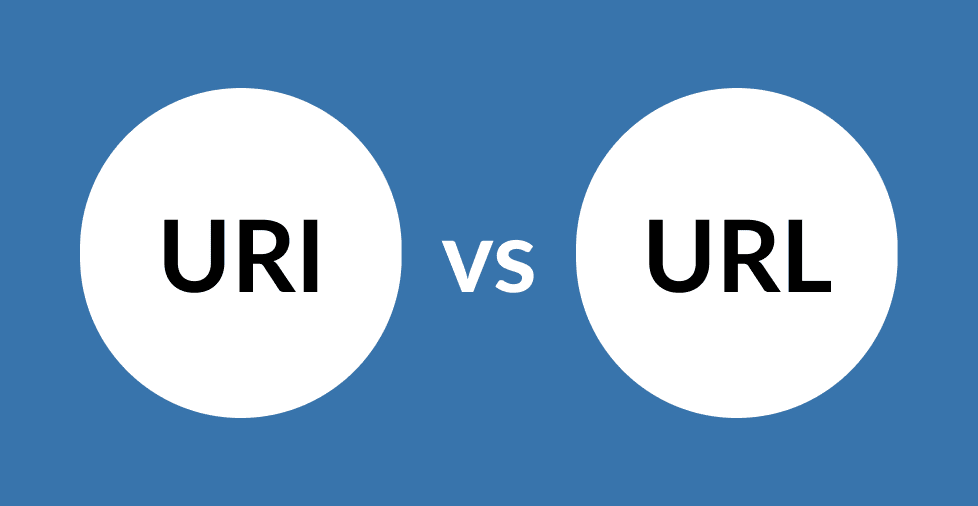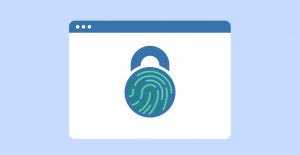Key takeaways:
- URIs identify resources, URLs specify their locations, and URNs provide persistent, location-independent names. Well-structured URLs and correct identifier types improve SEO, web performance, and API design.
- Well-structured URLs and correct identifier types improve SEO, web performance, and API design.
- Clear understanding of web identifiers supports consistent and effective implementation across projects.
Whether you’re building a website, working with APIs, or diving into SEO, you’ve probably come across the terms URI, URL, and URN. They’re often used interchangeably, but they shouldn’t be. Each one plays a different role in how resources are identified and located on the internet.
In this guide, we’ll break down what each term means, how they differ, and when to use them. By the end, you’ll have a clear understanding of URIs, URLs, and URNs—and why knowing the difference actually matters.
What is a Uniform Resource Identifier (URI)?
At its most fundamental level, a Uniform Resource Identifier (URI) is a string of characters that identifies a logical or physical resource. Think of it as a name or address for anything connected to the internet; it uniquely labels something.
The key purpose of a URI is simply identification. It doesn’t necessarily tell you where the resource is or how to access it, only what it is.
For example:
- A name like mailto:[email protected] is a URI because it identifies a resource (an email address).
- A path like urn:isbn:0451450523 identifies a book using its ISBN number.
In short, URIs are important for consistently identifying resources across platforms, whether those resources are on the web, in a database, or part of another system.
Components of a URI:
A URI follows a general syntax designed to be extensible and flexible. While not all components are always present, a typical URI structure looks like this:
scheme:[//authority][path][?query][#fragment]
- Scheme
- Authority
- Path
- Query
- Fragment
- Scheme
This indicates the protocol or context for the identifier (e.g., http, https, ftp, mailto, urn).
Authority (optional)
This typically includes user info (username:password), host (domain name or IP address), and port number.
Path
This specifies the local name or location of the resource within the hierarchical structure of the authority.
Query (optional)
Marked by a question mark (?), it contains non-hierarchical data for the resource (e.g., search parameters).
Fragment (optional)
Marked by a hash (#), it provides direction to a secondary resource or a specific part of the primary resource.
URI examples
Many URIs are indeed URLs, but not all. Here are some examples to illustrate the breadth of URIs:
- https://www.networksolutions.com/blog/uri-vs-url (This is also a URL)
- ftp://user:[email protected]/pub/file.txt (This is also a URL)
- mailto:[email protected] (A URI that is NOT a URL; it identifies an email address)
- urn:isbn:0451450523 (A URI that is NOT a URL; it identifies a book by its ISBN)
- data:text/plain;base64,SGVsbG8sIFdvcmxkIQ%3D%3D (A Data URI, also not a URL, which embeds data directly)
Use cases for URIs
URIs are used in many technologies including:
- Abstract resource identification. When you need to refer to a resource without specifying its exact network location. This is common in databases, content management systems, or version control, where the resource’s name is consistent even if its storage location changes.
- Semantic web. In technologies like RDF (Resource Description Framework), URIs are fundamental for identifying entities and relationships, providing a global identifier for anything.
- API design (Resource identification). RESTful APIs often use URIs to identify resources, while the specific HTTP methods (GET, POST, PUT, DELETE) applied to a URL (a URI that is also a locator) determine the action.
URI best practices for developers
- Clean API design (/users/{id} vs /users?id=123)
- Avoid ambiguity in documentation
- Use meaningful, human-readable slugs in URLs
What is a Uniform Resource Locator (URL)?
A URL (Uniform Resource Locator) is a specific type of URI that not only identifies a resource but also provides information on how to locate and access it. In simple terms, a URL serves as an address that specifies where a resource is located and how it can be retrieved.
Here’s an example of a URL:
https://example.com/articles/tutorials?page=2#introduction
Components of a URL:
A URL is made up of several parts that help locate and access content online. Here’s a quick look at its key components:
- Scheme
- Domain name
- Path
- Query parameters,
Scheme: (https)
The scheme specifies the protocol used to access the resource. In this case, https indicates the secure version of Hypertext Transfer Protocol (HTTP).
Domain name: example.com
This is the address of the server where the resource is hosted. It tells the browser or system which server to communicate with.
Path: /articles/tutorials
The path points to the specific location of the resource on the server. It acts like a file path on the server directory.
Query parameters: ?page=2
Query parameters provide additional information to the server, often used for filtering or customizing the resource. Here, page=2 indicates the request for the second page of results.
Fragment identifiers: #introduction
The fragment identifiers point to a specific section within the resource, typically used to jump to a particular part of a web page. In this case, it points to the “introduction” section of the web page.
URL examples
Here are common examples of URLs you encounter daily:
- https://www.networksolutions.com (Homepage of NetSol)
- https://www.google.com/search?q=URI+vs+URL (A Google search result page)
- https://en.wikipedia.org/wiki/URI#URL (A specific section on a Wikipedia page)
Use cases for URLs
URLs are essential for accessing and sharing content on the internet. Common use cases include:
- Website navigation. Directing users to specific pages or sections of a site.
- Link sharing. Sharing content via email, social media, or messaging apps.
- APIs and web services. Accessing data endpoints in applications and integrations.
- SEO and marketing. Tracking campaigns with UTM parameters or optimizing links for search engines.
- File downloads: Linking directly to documents, images, or software packages.
In short, URLs serve as the digital addresses that make the web functional and interconnected.
URI vs. URL: A side-by-side comparison
The relationship between URI and URL is often described using the analogy: “All URLs are URIs, but not all URIs are URLs.” This means a URL is a subset of a URI.
Here’s a clear comparison to highlight their key distinctions:
| Aspect | URI | URL |
| Definition | An identifier for a resource | A locator for a resource |
| Scope | Broader | Narrower (a specific subset of URI) |
| Purpose | Identifies a resource by name or location | Locates and retrieves a resource |
| Usage | Used to access resources, such as websites, images, or files. | Used to identify resources, like books (ISBNs), email addresses, or web pages. |
| Components | Contains components such as scheme (e.g., https://), domain (e.g., www.example.com), and path (e.g., /page). | Can be more general, containing just a name (URN) or location with access details (URL). |
| Examples | mailto:[email protected] | https://example.com/about |
What is a Uniform Resource Name (URN)?
Within the URI family, there’s another important member: the Uniform Resource Name (URN). A URN is a URI that identifies a resource by its name, but unlike a URL, it doesn’t specify how to locate it or the protocol for accessing it. URNs are designed for persistence—meaning the identifier remains valid even if the resource moves or changes location.
Here’s an example of a URN:
urn:isbn:0451450523
- Namespace: isbn
The namespace is a label that tells you what type of resource is being identified. In this case, isbn refers to the International Standard Book Number, which is a unique identifier for books.
- Identifier: 0451450523
The identifier is the unique value that identifies the specific resource within that namespace. In this case, 0451450523 is the ISBN number for a particular book.
This URN identifies a book by its ISBN but does not provide any information on where or how to access the book. It simply serves as a unique identifier for the resource.
URNs are particularly useful in systems like libraries, academic databases, and other archival systems where resources need to be reliably and consistently identified over long periods, even if their location or method of access changes over time.
By using URNs, organizations can ensure that resources are always identifiable, even if they’re moved, renamed, or stored in different formats or locations.
URN components and examples
A URN typically consists of a scheme (urn), a Namespace Identifier (NID), and a Namespace Specific String (NSS).
- urn. The scheme indicating it’s a URN.
- NID. Specifies the naming authority for the identifier (e.g., isbn, ietf, uuid).
- NSS. The actual identifier within that namespace.
Examples:
- urn:isbn:0451450523 Identifies a book by its International Standard Book Number.
- urn:ietf:rfc:2648. Identifies a specific Internet Engineering Task Force (IETF) RFC document.
- urn:uuid:f81d4fae-7dec-11d0-a765-00a0c91e6bf6. A Universally Unique Identifier.
How URNs Relate to URIs and URLs
URNs, URLs, and URIs are often confused, but they serve different purposes. Here’s how URNs fit within the broader URI framework.
- URI > URL > URN. This hierarchy is incorrect. The correct relationship is that both URLs and URNs are types of URIs.
- URI = URL + URN + other identifiers.A URI is the overarching category for any string that identifies a resource. URLs identify by location, and URNs identify by name.
URI vs URL vs URN: A side-by-side comparison
| Aspect | URI | URL | URN |
| Identifies resource | Yes | Yes | Yes |
| Locates resource | No | Yes | No |
| Provides access info | No | Yes | No |
| Example | mailto:[email protected] | https://example.com/page | urn:isbn:0451450523 |
Why understanding between URI vs URL matters
While the distinctions might seem academic, a clear grasp of URIs, URLs, and URNs is vital for several practical reasons in the digital realm.
- Enhances technical precision and communication
- Improves web system compatibility and interoperability
- Enables more effective APIs and web standards
- Strengthens SEO and user experience
Enhances technical precision and communication
Using the correct terminology prevents ambiguity when discussing web architecture, API design, or data storage. For instance, when designing a RESTful API, URIs are used to identify resources, while URLs provide the means to interact with them via specific endpoints.
Improves web system compatibility and interoperability
Understanding how different identifiers function helps developers create robust systems and foster seamless interactions. Whether it’s ensuring consistent data retrieval or designing flexible resource management, precise identification is key.
Enables more effective APIs and web standards
When designing APIs or working with web standards, understanding the distinction allows for cleaner, more robust implementations.
Strengthens SEO and user experience
For SEO, URLs are paramount. They are what search engines crawl, what users see in search results, and what defines the structure of your website.
- Clarity and crawlability. Well-structured, descriptive URLs (which are URLs, a type of URI) help search engines understand your content and improve crawl efficiency.
- User experience. Clean, readable URLs enhance user trust and make it easier for people to understand what they’re clicking on.
- Ranking signals. While not a major factor, having relevant keywords in URLs can provide a slight boost to search engine rankings and improve click-through rates by making links more descriptive and user-friendly.
- Canonicalization. Correctly using URLs is vital for managing duplicate content issues and signaling the preferred version of a page to search engines.
- AI Overviews and LLMs. Your content must offer clear, semantically rich definitions and precise, well-structured explanations. Using accurate terms and concise formatting boosts your chances of being recognized as an authoritative source.
Master web identifiers for success
Understanding the distinctions between URIs, URLs, and URNs is more than just academic. It helps you build better websites, create stronger APIs, and improve your SEO.
By using the correct terminology and understanding how each one works, you can build more precise, scalable, and discoverable web applications.
Whenever you’re ready, register your domain in minutes and get hosting that won’t slow your site down. Check out what Network Solutions has to offer.
Frequently asked questions
Not exactly. A URL (Uniform Resource Locator) is a specific type of URI (Uniform Resource Identifier) that includes the means to locate a resource (like its address on the web). All URLs are URIs, but not all URIs are URLs.
URL is a type of URI that provides the specific address to access a resource.
URI identifies a resource, either by location, name, or both.
Endpoint refers to a specific URL used to interact with an API, often representing a function or data source.
A URI (Uniform Resource Identifier) is a string that uniquely identifies a resource on the web. It can be a URL (which locates the resource) or a URN (which names the resource without specifying its location).
The URL path is the portion of a URL that follows the domain name and specifies the exact resource (e.g., /products/123). The URI path refers to the same part but in the broader context of any URI—it may or may not include access information like scheme or host.
No, a URI cannot be both a URL and a URN simultaneously. A URI is the overarching category. A resource identifier can be a URL (meaning it tells you where the resource is and how to access it) or a URN (meaning it gives the resource a persistent name), or it could be another type of URI that is neither.
Use URI when you’re referring to a resource in a general sense (which includes both URLs and URNs). Use URL when you’re specifically referring to the location of a resource that can be accessed via the web (like with HTTP or HTTPS). In most web development contexts, URL is the more commonly used and recognized term.
Yes. Every URL is a type of URI, so you can treat a URL as a URI in most cases. If you’re formatting or working with identifiers in code or documentation, just ensure you’re using the correct structure and terminology based on the context.




